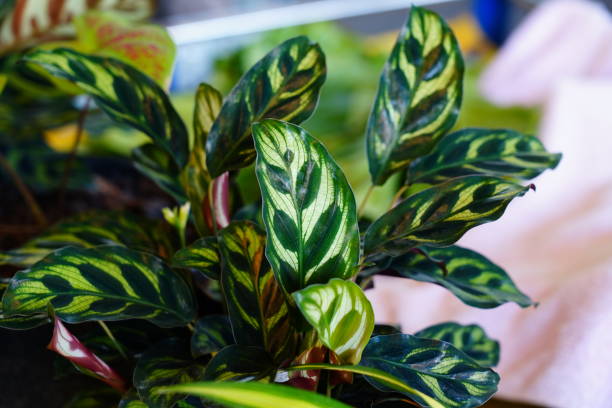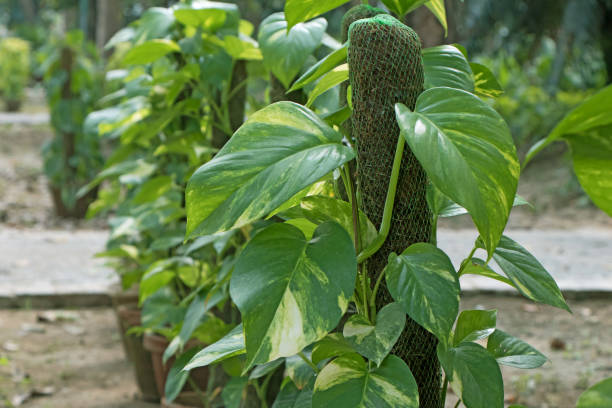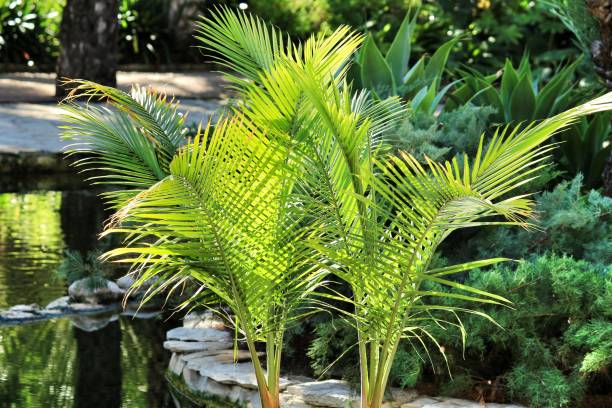Carnation Flower: Plant Care and Growing Guide

The perennial flower known as the carnation (Dianthus caryophyllus) is widely cultivated for its use in floral arrangements. It is common to receive corsages, boutonnieres, or bouquets adorned with carnations. These flowers belong to the dianthus family and are often called pinks due to their natural colour variations, encompassing numerous shades of pink, white, coral, and red. During special occasions like Saint Patrick’s Day or Easter, white Carnation Flowers are frequently dyed in different hues, such as green or pastel colours.
Carnation flowers possess an intricate and frilly appearance that adds beauty to flower compositions. They also emit a unique and mildly spicy fragrance reminiscent of cloves, which is highly appreciated by many. To cultivate carnations, planting them in early spring, around April or May, a couple of weeks after the final frost is recommended. While it is possible to see blooms within six weeks, it is more typical for these plants not to flower during their initial year, requiring patience. Additionally, it’s important to note that carnations have a mild toxicity to animals.
The Significance and Symbolism of Carnation Flower
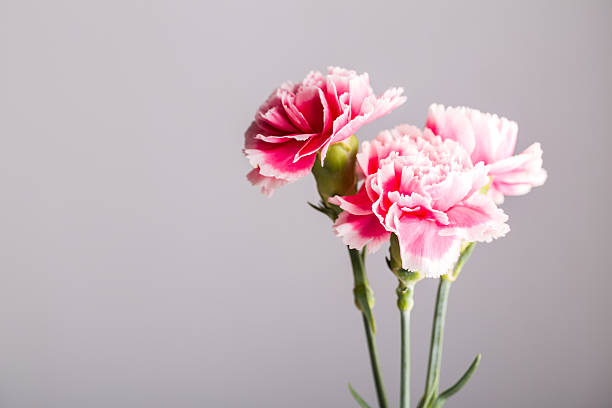
For over two millennia, the dianthus plant has been extensively cultivated, as evidenced by its mention in ancient Greek writings. Determining its precise place of origin proves challenging. However, some botanists propose that it may have originated somewhere in the Mediterranean region. The term “dianthus” derives from Greek, meaning “divine flower,” while “Carnation Flower” is a Latin word denoting a “crown” or “garland.”
In the realm of symbolism, Carnation Flower traditionally represent enchantment, distinction, and love, particularly maternal love. In Christian folklore, the flower is linked to the tears shed by the Virgin Mary, solidifying its strong association with motherhood.
Caring for Carnation Flower
Dianthus caryophyllus thrives best within USDA hardiness zones 7 to 10, making it slightly less tolerant to cold than other dianthus varieties. Although dianthus is sometimes referred to as short-lived perennial, they can provide years of beauty and fragrant blossoms with optimal conditions.
Carnation Flower boast vibrant colours, making them a splendid choice for cottage gardens. Primary seasonal care involves removing spent flowers after their initial bloom, promoting a likelihood of reblooming later in the season. While mulch is not essential, it is advisable to opt for a natural variety rather than dyed mulches if used. Like all dianthus plants, carnations are generally avoided by deer, although rabbits may find the leaves appealing for nibbling.
Light Requirements
While Carnation Flower thrive when exposed to full sunlight, they can also tolerate partial shade. Excessive intense afternoon sun may lead to the fading of brightly coloured carnation petals. For optimal freshness and vibrant hues, it is advisable to plant Carnation Flower where they can receive morning sun whenever possible.
Soil Composition
Carnation Flower necessitate well-drained and alkaline soil, often called “sweet” soil. Alkaline soil typically contains slightly higher calcium, magnesium, and sodium levels. If the soil tends to be acidic, incorporating a small amount of lime during Carnation Flower planting will provide a favourable start for the plants.
Watering Practices
Dianthus caryophyllus demonstrates relative drought tolerance, but regular watering is essential during spring when flower buds form. In dry summer periods, additional watering may be necessary. It is recommended to water at the base of the plant, ensuring not to overwater, as excessive moisture can result in yellowing leaves and drooping or shedding of flower petals.
Temperature and Humidity Considerations
Carnation Flower prefer a warm environment but may wilt under extreme heat conditions. They thrive best in low-humidity settings. However, a light misting of cool water occasionally can help alleviate heat stress during exceptionally hot weather.
Fertilization Techniques
Young, developing Carnation Flower can benefit from a modest amount of slow-release fertilizer. Applying a fast-acting fertilizer can potentially harm the plant. It is important to avoid overfertilization, as it can lead to root shrinkage and create conditions conducive to root rot.”
Varieties of Carnation Flower
Home gardeners have three primary types of Carnation Flower to choose from: large-flowered carnations (also called standard carnations), dwarf-flowered carnations, and spray or miniature carnations. Presented below are just a few examples among the vast array of available cultivars.
Chabaud Carnation Flower
These expansive standard carnations offer a diverse selection of cultivars. Some notable options include “Jeanne Dionis” (white), “Benigna” (white flowers with magenta edges), “Aurora” (varieties ranging from medium to dark pink), “Orange Sherbet” (warm and deep coral), and “La France” (classic pale pink).
Spray carnations
This group encompasses cultivars such as “Elegance” (pink flowers with white edges), “Exquisite” (purple flowers with white edges), and “Rony” (bright scarlet red).
Full double-petaled carnations
These smaller-sized varieties exhibit flowers with complete double-petaled formations. Among them are “Appleblossom Burst” (pink shades with deep red centres), “Double Bubble” (vibrant bubble gum pink), “Grace Bay” (cream-coloured flower heads bordered by magenta), and “Rosy Cheeks” (medium pink with orange centres).”
Growing Carnation Flower in Your Garden
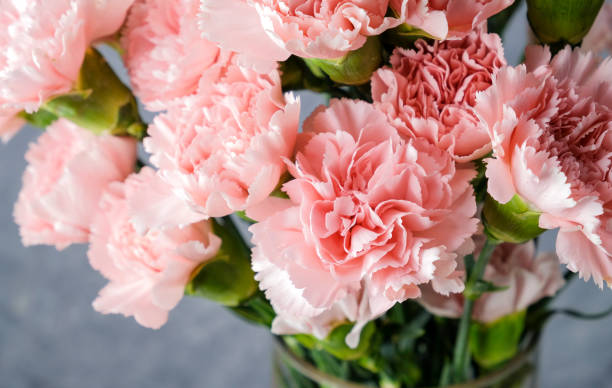
Planting Time for Carnation Flower
To cultivate Carnation Flower from seeds, choosing cultivars appropriate for your specific growing zone is essential. Start them indoors, basking in a sunlit window, around six to eight weeks before the final frost date in your area. Alternatively, you can sow carnation seeds outdoors after the frost period ends. However, it is unlikely they will bloom in their first year. Opt for this method only if your growing zone is at least USDA 6, ensuring their survival as perennials throughout the winter.
Planting Method for Carnation Flower
Plant the seeds in a potting soil mixture, scattering them evenly on the surface and lightly covering them with soil. Maintain moisture by periodically misting the seeds and loosely covering the planting container with plastic to create a greenhouse-like environment. Germination should occur within three days. Once the seedlings develop two or three leaves, transfer them to individual containers, allowing them to reach a height of at least 4 to 5 inches before transplanting them outdoors once the threat of frost has passed.
Carnation Flower Propagation
Apart from growing Carnation Flower from seeds, there are two additional propagation methods: cuttings and division.
Propagation through Carnation Flower Cuttings
Professional Carnation Flower cultivators commonly employ cuttings for propagation. They use terminal flowers—those forming at the end of a sprout rather than at the stem-branch junction. These cuttings should measure 4 to 6 inches. The process involves inserting the cuttings into pure sand, and after approximately 25 to 30 days, they will be ready for transplantation.
Propagation through Carnation Flower Division
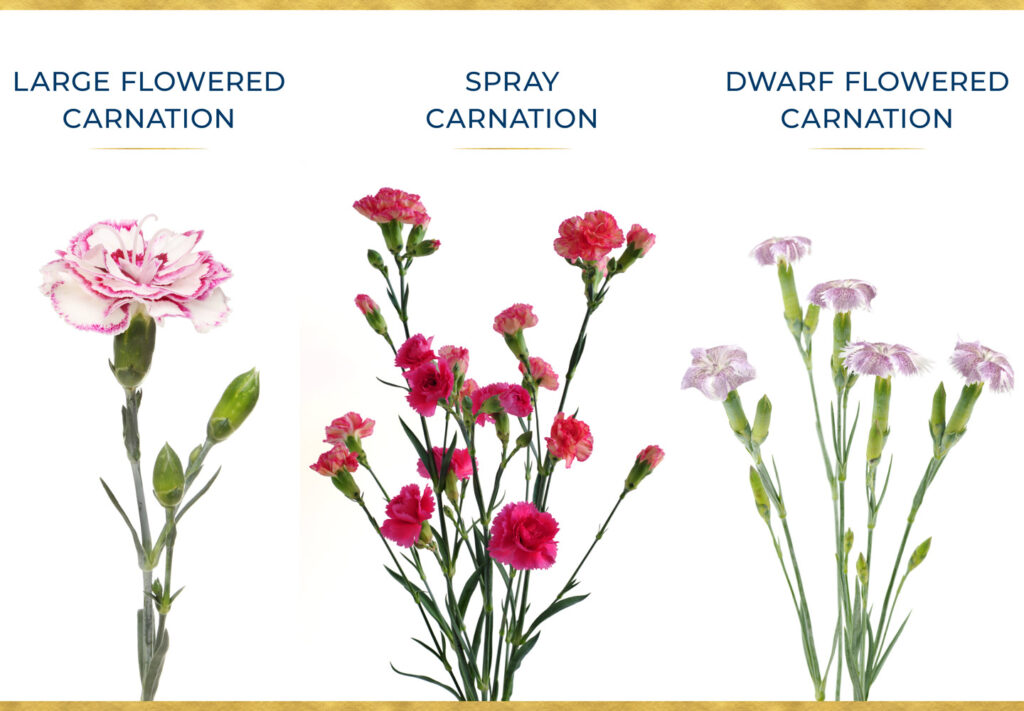
Reviving and maintaining the vigour of old, unkempt Carnation Flower plants in your garden can be accomplished through division. Dividing them every two to three years helps rejuvenate the plants and ensures their well-being. Follow these steps:
- Dig up a clump of Carnation Flower from the soil.
- Gently separate the plant and its roots into several segments.
- Inspect the roots, removing any signs of rot using disinfected snippers.
- Replant the segments in a sunny location, ensuring adequate watering.
Potting and Repotting Carnation Flower
For an appealing addition to your patio, consider growing Carnation Flower in pots. Opt for containers made of any material, ensuring they have proper drainage holes. It is crucial to choose a pot that provides sufficient space—one that is 8 inches in size or one size larger than the plant’s current pot. When transferring carnations from their previous container, assess if they are root bound or need rejuvenation. Gently remove the old soil from the roots, carefully inspecting for rotted roots that can be trimmed with a sanitized cutting tool. Report the carnation in a new container filled with high-quality potting mix, ensuring adequate watering without oversaturation or creating soggy soil.
Overwintering Carnation Flower
Carnations exhibit resilience to cold weather conditions and can endure harsh winters. To promote their survival, trim the plants down to a few inches above the ground before the arrival of winter.
Common Pests and Plant Diseases
Carnation Flower are susceptible to various pests, including aphids, spider mites, and cutworms. Controlling aphids and spider mites can be achieved using insecticidal soap. Dealing with cutworms can be more challenging, but manual removal or employing protective collars around the plants may be effective.
Fungal diseases pose a risk to Carnation Flower, including leaf spots, rust, and botrytis flower rot. Bacterial wilt (characterized by oozing) and vascular wilt (causing discolouration) can also affect the plant’s health.
How to Encourage Carnation Flower Blooms?
To promote abundant and fringed carnation blossoms, it is advisable to select a planting location that receives a minimum of six hours of sunlight per day. Carnation Flower thrive in well-draining soil to ensure optimal blooming, as improper drainage can result in discoloured flowers.
Occasionally, Carnation Flower buds may be tightly closed or fail to fully open. The following methods are most effective for cutting carnations or those in containers. To encourage the opening of a resistant bud, gently brush the bud with the flower head of a mature carnation. This delicate contact often provides the right stimulus for the reluctant bud to unfold. Brushing should be done from the centre of the flower towards its outer edges to facilitate blooming. If a bud appears closed but displays signs of readiness to open, softly squeeze the base of the bud to alleviate any tightness, providing a gentle nudge for it to bloom.
Common Issues with Carnation Flower
Dianthus plants are generally straightforward to cultivate and maintain. However, you may encounter some problems along the way, including the following:
Brown Blooms and/or Leaves
If certain parts of the flower turn brown, with a papery texture and accompanied by spots of grey fuzz, the plants may be affected by botrytis flower rot. Browning and leaf curl can also be caused by rust or leaf spots. In such cases, removing the affected areas and avoiding overhead watering is essential, as excessive moisture on the buds and leaves can exacerbate the issue. Improving air circulation by spacing the plants adequately can be beneficial.
Yellowing Leaves
When the leaves become noticeably pale yellow, it is advisable to check for spider mites and their fine webs on the undersides of the leaves. The use of insecticidal soap can effectively address this problem. Aphids can also cause leaf discolouration.
Holes in Buds
The presence of holes in the buds indicates the activity of cutworms. To prevent further damage, protective measures or pesticides may be necessary.
Wilting and Split Stems
Wilting and split stem could be signs of bacterial wilt infection, with younger plants being more susceptible. To prevent the spread of the disease, infected parts should be carefully removed using sterilized cutting tools. Careful watering techniques should be employed to avoid splashing water on the buds or leaves. Wilting can also result from root rot, leading to yellowing leaves and eventual plant decline.
Some FAQs
What is the significance of a Carnation Flower?
Carnation Flower hold symbolic meanings, representing love and beauty in general. However, the interpretation varies depending on the colour. For instance, light red carnations are associated with admiration, while dark red ones symbolize passionate love. Pink carnations convey fondness, gratitude, and maternal love. Purple carnations signify sorrow or apology. Yellow carnations can get that message if you wish to express rejection or disappointment.
What are the notable characteristics of Carnation Flower?
Carnation Flower are widely recognized and favoured for various purposes, such as floral arrangements, corsages, and boutonnieres. They are a popular choice due to their affordability compared to roses. Additionally, carnations are known for their enduring fragrance and extended vase life. In the early 1900s, pink carnations were designated as the emblem for Mother’s Day. In contrast, white carnations were traditionally used to honour deceased mothers.
Do Carnation Flower bring good fortune?
Carnation flowers, particularly white ones, are believed to symbolize luck and purity. This is why they are often included in corsages and wedding bouquets, carrying positive connotations and bestowing good fortune.




